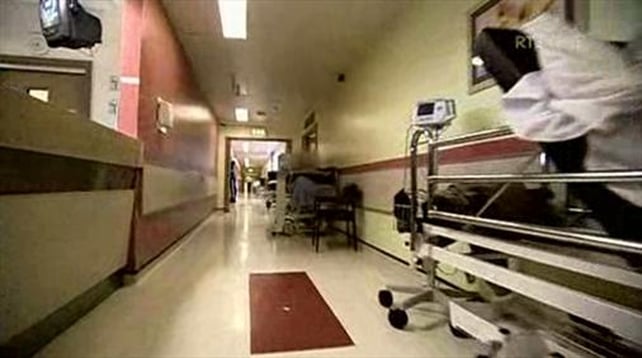Major shake-up of Irish hospital system coming says Minister Reilly


The country’s hospitals are to be organised into six groups, while smaller hospitals are set to have some major services transferred to larger centres, following changes announced today by Health Minister James Reilly.
The changes, some of which are already being put in place, when completed will mark the biggest revamp of the hospital system for many decades. Work on implementing the revamp is to start imediately.
Health Minister James Reilly, launching the new plans, said patients would not notice an immediate change in care provision, but they would gradually see a greater range of services being provided, particularly in smaller hospitals. He said changes were already being seen in hospitals such as Mallow and Roscommion.
Under the plan, hospitals will be divided into six groups, which will eventually become independent, self-governing trusts as part of the planned overall reform of the system that involves the abolition of the HSE and the advent of universal health insurance (UHI)
The groups have been designated as Dublin North-East; Dublin Midlands; Dublin East; South/South-West; West/North-West and Mid-West. Each group will have between six and 11 hospitals and includes at least one major teaching hospital. All groups will be attached to university medical schools and services and staffing will be spread among hospitals within each group.
The biggest hospital in each group is Beaumont; St James’s; the Mater; Cork University Hospital; University Hospital Galway and the Mid-Western Regional Hospital in Limerick. Each group will include a major cancer treatment centre.
Letterkenny and Sligo Hospitals are to be designated as a formal sub-unit within the new West/North-West group.
Hospital groups have already been operating in the west and the north-east.
The changes will mark the biggest revamp of the hospital system for many decades.
Some hospitals that are currently linked for service provision will be split into separate groups.The Rotunda and the Mater are to be separated while Mullingar Hospital is to be separated from Portlaoise and Tullamore Hospitals.
Waterford Regional Hospital does not get to head up it own regional south-east group, but has been included in the new South/South West group. Its potential downgrading under the new plan has cause local protests.
However, the plan says Waterford Hospital will continue to be a regional trauma and orthopaedic centre and to provide an expanded invasive cardiology service. It will have academic consultant appointments at UCC and will be renamed Waterford University Hospital.
Under plans announced for smaller hospitals, nine hospitals have been earmarked for a changed role – Navan; Dundalk; Loughlinstown; Mallow; Bantry; Ennis; Nenagh; St John’s in Limerick and Roscommon County.
All except Navan and Loughlinstown have already had 24-hour emergency departments cover removed, and Loughlinstown and Navan are expected to lose their major A&E services shortly. Smaller hospitals are, however, retaining many services and getting expanded services under the plan, including day surgery and diagnostics.
All nine hospitals, under the plan, will have local injury units, instead of full A&Es, and these units will operate from 8am to 8pm. Some already have these injury units as well as other new services.
The smaller hospitals plan provides for some of these hospitals to still carry out some more complex planned surgery in certain cases. Otherwise, the smaller hospitals would mostly carry out day surgery.
Under the plan, none of the smaller hospitals – designated ‘model 2 hospitals’- can provide major acute surgery or critical care. These can only be carried out in the larger Model 3 and Model 4 hospitals.
Model 3 hospitals will have 24/7 EDs, acute surgery, acute medicine and critical care, while Model 4 hospitals will have these services plus specialist, supra-regional care. The smaller model 2 hospitals will continue to provide some acute medical care.
The plan stresses that the traditional practice of providing as many services as possible in every hospital is neither sustainable nor safe and the system is being reformed to meet these challenges.
Minister Reilly said while we had some of the best doctors and nurses in the world, we did not have the best health system, and that needed to change.
The plan says other hospitals such as Letterkenny, Wexford and Kerry General, because of their location, will retain their full range of ED services, as well as surgical, maternity and paediatric services.
The chair of the expert team that drew up the report on hospital groups, Prof John Higgins, said no hospitals would get any surprises in the recommendations of the report. A separate report recommended the changes in the role of smaller hospitals.
Minister Reilly, asked about the splitting up of closely-located hospitals in both Dublin and the Midlands into different groups, said existing clinical care pathways would not be disrupted.
He said the addition of some new services to smaller hospitals would free up the larger hospitals to do more appropriate work.
The Minister said over a period of time, people would see that more services are available to them locally and that these services would be safe. He said there would be no downgrading of Waterford Hospital under the plan.
Work on the roll-out of the hospital groups is to start immediately, according to the Minister, with group chairpersons and CEOs (who will be appointed from within the HSE system) to be put in place as soon as possible.
Each group must develop a strategic plan for their future services in the first year of their operation. These plans must describe how they will reorganise these services to provide optimal care to the populations they serve. They must also show how they plan to link their services effectively with GP and primary care services in the community.
The hospital groups will be converted into independent trusts in 2015 – the CEO positions for these trusts will be advertised internationally.
The new hospital system will eventually operate under a ‘money follows the patient’ basis under UHI, which means they will be not receive fixed budgets but will be funded according to the level of services they provide and the number of patients they treat, thereby incentivising staff to work more effectively.
Young Irish households ‘dramatically’ cut consumption compared older ones


Young households in Ireland ‘dramatically’ cut consumption after the onset of the financial crisis according to research published today by the Economic and Social Research Institute. The research shows ‘that this drop in consumption stands in contrast to the experience of older households, whose average expenditure did not decline.
‘The ESRI research note [pdf] says Figure 1 above presents average weekly income and consumption for households with a head below 45 years of age in the left plot and for households with a head aged 45 and up in the right plot. ‘By choosing a split at 45, we capture almost exactly half of the Irish households in each of the plots.” The data cover the last four Household Budget Survey (HBS) waves from the CSO and are inflation adjusted to the 2010 price level.
Petra Gerlach-Kristen, the ESRI economist, says that from a policy perspective, ‘the analysis suggests that the main burden of the crisis is borne by the younger half of the Irish population, both because young households have been particularly likely to become unemployed in the crisis and because many of them purchased a house/apartment prior to the crash. While unemployed young households are likely to find new jobs relatively quickly once the economy recovers, this Note nevertheless raises the question how policy can best address the disproportionate impact the crisis has had on Ireland’s young households.’
Irish Health insurance cover set to go up by 30%


Economist Colm McCarthy has warned of excessively high health insurance costs arising out of the Government’s plan to charge privately insured patients for occupying public beds.
Mr McCarthy’s report, produced in association with Aviva Health, estimates that premiums are likely to increase by 25-30%.
He said that overall private membership has fallen from 50.9% to 45.7% – particularly in the 20 to 29 age group. At the same time, the number of customers over 60 has grown by 52,000. Alison Burns, chief executive of Aviva Health, said that a community-rated system requires a sizeable cohort of younger and healthy members to offset the high costs associated with claims from the rising numbers of older members.
Irish Court orders Peter Darragh Quinn to pay €145m damages to IBRC


Peter Darragh Quinn has been ordered to pay €145m damages to Irish Bank Resolution Corporation over his “pivotal” role in stripping assets from the Quinn family’s international property group.
Three Russian companies were also ordered to pay damages of €252m, €178m and €154m over their involvement in the scheme to place assets beyond the reach of the bank.
Mr Justice Peter Kelly assessed damages in those amounts at the Commercial Court following the entry of judgment last February against Mr Quinn after he failed to enter a defence to the bank’s claim.
Justice Kelly noted IBRC had limited its claim to €145m for now against Mr Quinn but was reserving its position in relation to other possibly quantifiable losses.
He was satisfied the bank was entitled to judgment in that sum over Mr Quinn’s wrongful conduct.
He also continued an order restraining Mr Quinn from reducing his assets below €50m.
A warrant for his arrest to serve a three-month sentence for contempt remains unexecuted.
While Mr Quinn had not entered a defence to the bank’s application for judgment against him, he wrote to the Commercial Court last month, and again last weekend, asking it to defer the assessment of damages pending the outcome of his appeal to the European Court of Human Rights against the contempt finding.
Alternatively, he asked that he be allowed adopt the defences entered by other members of the Quinn family to the bank’s claim. The bank knew he was not a “mark” for damages and would not be prejudiced by an adjournment, he added.
Shane Murphy SC, for IBRC, opposed the adjournment application on grounds including that Mr Quinn had taken no steps to advance his Supreme Court appeal against the contempt finding. The bank also had no details of the ECHR appeal, he added.
Mr Quinn had himself decided not to enter a defence to this case or to attend court, counsel also argued.
Mr Justice Kelly, refusing the adjournment application, said Mr Quinn remained in flagrant contempt of court and there was no merit to his application.
The judge then heard the bank’s application for assessment of damages against Mr Quinn and a number of companies. He granted €145m damages against Mr Quinn and damages in various sums against three Russian companies over their involvement in the asset stripping scheme.
In 2011 IBRC initiated its proceedings against several companies and various Quinn family members, including Peter Darragh Quinn, alleging the stripping of assets from the IPG.
Just 18% of Irish doctors want patients to have full access to their medical records
One in five GPs do not have high speed internet access
Fewer than one doctor in five believes that their patients should have full access to their medical records, a new survey reveals.
The Accenture Ireland survey of doctors and consultants in Ireland was commissioned to ascertain how far the medical profession has embraced digital technology in their surgeries.
It found a general unwillingness among doctors to give their patients access to their records, a pattern also repeated in the eight other countries surveyed by Accenture – Australia, Canada, England, France, Germany, Singapore, Spain and the US.
Just 18 per cent of Irish doctors were in favour of full access, 61 per cent limited access and 19 per cent wanted no access at all.
Accenture Ireland head of health Pat Power said several international health systems had found the benefits outweighed the risks in allowing patients open access to the medical records “and we expect this trend to continue”.
The poll was carried out by Millward Brown on behalf of Accenture Ireland and involved 248 doctors and consultants, of whom 23 were in Northern Ireland. It revealed a patchy record among doctors of the use of electronic medical records (EMR).
One in five GPs do not have high speed internet access and a similar number did not have access to EMR, with over half of those being consultants.
Some 69 per cent of doctors do not currently have the facility to communicate electronically with patients (for example, via secure email) to support remote consultation and diagnostics.
Nevertheless, two-thirds of doctors agree that electronic health records are integral to effective patient care today, while over half (55 per cent) agree they will become integral to effective patient care in the next two years.
Mr Power said it was clear that Irish doctors saw the benefits of healthcare information technology but many were slow to apply it.
Mobile phones the most commonly used tele-communications device


97% USE MOBILES, 69% USE LANDLINES: COMREG ict survey
A survey of consumers has found that mobile phones are the most commonly used telecommunications service at 97% and landlines were used by 69% of those surveyed.
Figures from ComReg’s Consumer ICT survey for 2013, in research carried out by RedC, suggests television ownership is at 95%, 75% of those surveyed had laptops and 54% had smartphones.
ComReg says household access to broadband now stands at 78%, which includes respondents who receive broadband over mobile devices.
33% of those with broadband use the technology to make video-calls.
50% of those surveyed are unaware of the broadband speed they are receiving.
The survey’s findings also show that just over half of those surveyed use Sky for a TV service, 29% use UPC and 9% use Saorview.
77% of those questioned expressed satisfaction with their landline service and 76% expressed satisfaction with their mobile phone service.
Consumers ranked cost and service quality as the most important factors when using a telecommunications service.
Over half of respondents said they took a bundle of telecommunications services from their telecoms supplier while 65% of residents in urban areas opted for a bundle of services.
A combination of landline and fixed broadband is the most popular bundle.
Telecommunications Commissioner Kevin O’Brien said the survey reveals Irish consumers are looking for value for money when choosing a telecommunications service.
The survey was made up of responses from 1,000 people nationwide, with an additional 500 surveyed in urban areas.
Eating insects could help fight the obesity problem,


The thought of eating beetles, caterpillars and ants may give you the creeps, but the authors of a U.N. report published on Monday said the health benefits of consuming nutritious insects could help fight obesity.
More than 1,900 species of insects are eaten around the world, mainly in Africa and Asia, but people in the West generally turn their noses up at the likes of grasshoppers, termites and other crunchy fare.
The authors of the study by the Forestry Department, part of the U.N. Food and Agriculture Organization (FAO), said many insects contained the same amount of protein and minerals as meat and more healthy fats doctors recommend in balanced diets.
“In the West we have a cultural bias, and think that because insects come from developing countries, they cannot be good,” said scientist Arnold van Huis from Wageningen University in the Netherlands, one of the authors of the report.
Eva Muller of the FAO said restaurants in Europe were starting to offer insect-based dishes, presenting them to diners as exotic delicacies.
Danish restaurant Noma, for example, crowned the world’s best for three years running in one poll, is renowned for ingredients including ants and fermented grasshoppers.
As well as helping in the costly battle against obesity, which the World Health Organization estimates has nearly doubled since 1980 and affects around 500 million people, the report said insect farming was likely to be less land-dependent than traditional livestock and produce fewer greenhouse gases.
It would also provide business and export opportunities for poor people in developing countries, especially women, who are often responsible for collecting insects in rural communities.
Van Huis said barriers to enjoying dishes such as bee larvae yoghurt were psychological – in a blind test carried out by his team, nine out of 10 people preferred meatballs made from roughly half meat and half mealworms to those made from meat.


No comments:
Post a Comment